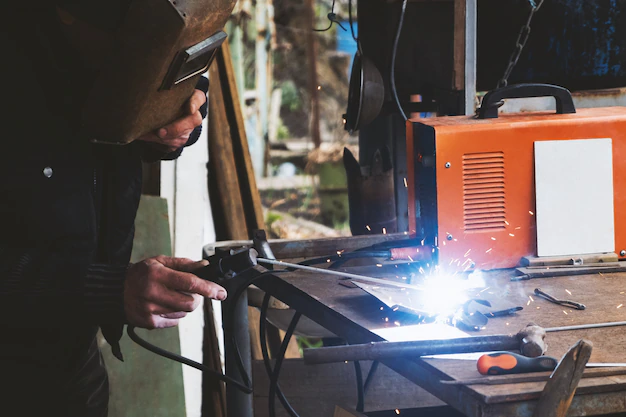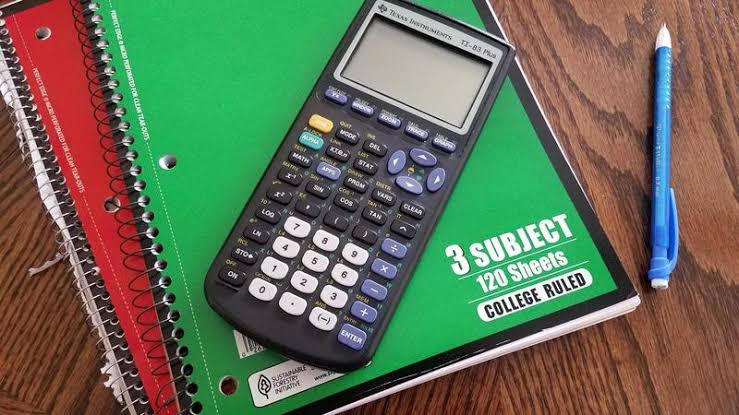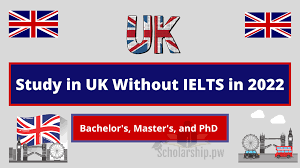Elementary education, also known as primary education, is the first step traditionally found in formal education, beginning between the ages of 5 and 7 and ending between the ages of 11 and 13.
Elementary school is a life-changing experience for children. The first day of kindergarten brings a child into a new world that evokes a growing spirit, an intimidating world, and a world that impresses children with learning and education, regardless of their preschool experience.
Elementary school charters are publicly funded and replace the regular public school system. Private group people can sign up for a charter school, get approval and run their school. Charter schools are exempt from public school districts for better academic performance.
Charter schools usually have a three to the five-year grace period to show their academic performance, during which staff members monitor the student’s academic performance.
If academic performance is lower than that of an equivalent public school, the charter school will be withdrawn, and the school will be closed. Elementary charter schools run independently of the local school district.
Managed by a non-profit board. Responsible for academic, operational, and financial performance by the charter contract. We believe that schools in this position are the best in primary education.
This topic shows how good education in the United States is at the primary school level and for you to make a choice.
Table of contents
- What is the Difference Between a Charter school and a regular Elementary school?
- What’s so special about elementary school business schools?
- Do Charter Schools Perform Better than Public Schools?
- Why do Parents Choose Charter Schools?
- 10 Best Charter Elementary Schools
- Conclusion
- FAQ
- References:
- Recommendations:
What is the Difference Between a Charter school and a regular Elementary school?
While charter schools are more flexible in design standards, traditional schools are subject to national school board regulations and national standards. Instead of belonging to the State Council, charter schools often have an independent council that sets standards and curriculum.
Both charter and traditional schools receive public funding, but the methods of receiving funding and reporting expenses may differ.
Traditional schools usually receive a portion of the money from the state budget to meet other needs through federal and local taxes.
Charter schools also receive money from state and local taxes but are usually allocated on a fixed student basis.
In addition, charter school costs are scrutinized as they fall into the school category of choice.
As a result, the handle needs to monitor how the money is spent carefully. Both types of schools must meet certain criteria, but the criteria themselves may differ.
Traditional schools are subject to national school board regulations and national standards.
Charter schools are more flexible in design standards. Instead of being linked to the State Council, charter schools usually have an independent council that sets standards and curricula.
Once these standards are approved, the charter school must maintain the charter school to secure state funding. Traditional schools are directly linked to the state government, which reduces curriculum flexibility, educational models, and classroom structures.
The charter school curriculum is flexible, and the educational model agreed upon by the board members benefits most students.
This does not mean that public charter schools always have a curriculum that differs dramatically from public schools. This means that charter schools have more freedom to use the curriculum in the most useful way for students.
Most people know that traditional public schools do not have an application process. However, charter school admission procedures can be misleading.
Some public charter schools require an application but do not require registration and are open to the public.
For example, if a student applies for a method school, fill out an online application form and a registration specialist will assist you in preparing.
Read Also: Albert Einstein Academy Charter Elementary School
Are charter schools USA Public or Private?
Charter Schools USA (CSUSA) is a type of public school, but it is operated independently of the local school district. Charter schools are publicly funded, tuition-free schools that operate under a “charter” or contract with an authorizing agency, such as a state or local school board.
Charter schools like CSUSA are given more flexibility in their curriculum, operations, and management than traditional public schools. However, they are still held accountable for meeting the same academic standards and requirements as other public schools.
This allows charter schools to experiment with new teaching methods and educational approaches, to improve student outcomes.
CSUSA operates more than 80 charter schools across the United States, serving over 75,000 students in grades K-12. While CSUSA is privately owned and operated, the schools are public and receive funding from public sources, such as state and federal education budgets.
What’s so special about elementary school business schools?
Charter schools have freedom and flexibility not found in public school districts, and the freedom of the Public Education Department allows students to spend more resources and energy helping students exceed their academic standards. Parents choose charter schools for three specific reasons.
According to the survey results, parents choose charter schools for three main reasons: academic reputation (32%), home/work proximity (28%), and a safe environment (27%). What are the benefits of a charter school?
Charter schools are usually small, with an average of 242 students enrolled, compared to 539 in traditional public schools. The biggest advantage of a vocational school can be summarized in one word: selection.
Students and parents receive many educational options at charter schools that may not be available at local public schools.
Their experience is that charter school proponents force students not attending charter schools to improve their academic programs to compete with students to fill their vacancies in traditional schools, so their experience is charter. Claim to benefit from the existence of the school.
The pressure to do at least means the charter school must work or be closed. This additional incentive will undoubtedly impact the educational environment of charter schools.
How many charter schools and students are there in the United States? The charter school sector is still growing, but both schools’ growth rate and student numbers have declined since the 2015-16 school year.
This is due to the closure of charter schools, which have few open spaces, and the increase in the general population of charter schools already in operation. The average annual closing rate is about 3.7%.
Approximately 4.2% of newly opened schools usually include the first and only opening year due to facility problems and low enrollment.
Regarding student enrollment, only a handful of states have regained control of the charter school sector. Five states, California, Texas, Florida, Arizona, and New York, account for more than half of all charter school enrollments nationwide.
California has the largest rental school sector, with one in five US charter school students attending California schools. However, Arizona has the highest number of charter school enrollments compared to the total population. Almost one in five students in public schools in Arizona attend charter schools.
Do Charter Schools Perform Better than Public Schools?
According to much research on charter schools, charter schools generally do not perform as well as traditional public schools, often with poor performance.
Charter schools seem to perform well because there are far fewer students with disabilities, and fewer students do not speak English as their mother tongue.
Many charter schools “do not fill” when students leave or take older students. Hand schools eliminate the most challenging students in various ways, and students must return to a local public school that accepts all students.
Why do Parents Choose Charter Schools?
Parents may have lived in the school district in question, but over one-third said their decision was because of an assignment rather than a positive choice. This shows that there may be a school. As people become more informed about what a charter school is, their approval will increase.
10 Best Charter Elementary Schools
If you live somewhere in the United States and are looking for the best school to attend, we offer you the top-ranked charter elementary schools in the United States.
#1. Peak to Peak Charter School
First on our list of Best Elementary Charter Schools in USA is Peak to Peak Charter School. This school is an excellent public charter school in Lafayette, Colorado. There are 1450 students from kindergarten to high school, and the ratio of students to teachers is 21: 1.
According to state tests, 61% of students are at least math-savvy, and 75% are reading-savvy. No. 1 in the best public elementary school in Colorado.
#2. Granada Hills Charter
No. 1 in California’s premier public elementary school, the Granada Hills Charter prepares students for the future. Headed by visionary leaders, teachers, and parents, the school opened in 1960 and became an independent charter school in 2003.
With independence from finance, government, and educational programs, the GHC community has a healthy learning environment. Students can prosper.
Read Also: Charter Schools vs Public Schools: Performance, Pros & Cons
#3. BASIS Flagstaff
No. 1 in the best public elementary school in Arizona. BASIS Flagstaff is an excellent public charter school located in Flagstaff, Arizona. The number of students from kindergarten to high school is 850, and the ratio of students to teachers is 11: 1. According to state tests, 84% of students are at least math-savvy, and 84% are reading-savvy.
#4. Lusher Charter School
#1 in the best public primary school in Louisiana. Lusher Charter School is an excellent public charter school in New Orleans, Louisiana.
The number of students from kindergarten to high school is 1,861, and the ratio of students to teachers is 18: 1. According to state tests, 98% of students are at least math-savvy, and 99% are reading-savvy.
#5. Newark Charter School
Newark Charter School is an excellent public charter school in Newark, Delaware. There are 2,412 students from kindergarten to high school, and the ratio of students to teachers is 17: 1. Based on state test results, 83% of students are at least math, and 87% are literate.
#6. Great Hearts Academy-Preparing for Chandler
Great Hearts Academies-Chandler Prepis a major public school in Charter, Arizona. There are 735 students from kindergarten to high school, and the ratio of students to teachers is 15: 1. According to state tests, 73% of students are at least math-savvy, and 72% are reading-savvy.
#7. Westlake Academy
The # 1 charter high school in Texas. Westlake Academy is an excellent public charter school in Westlake, Texas. There are 901 students from kindergarten to high school, and the ratio of students to teachers is 14: 1. According to state tests, 85% of students are at least math-savvy, and 85% are reading-savvy.
#8. Liberty Common Charter School
Liberty Common Charter School is an excellent public charter school in Fort Collins, Colorado. The number of students from kindergarten to high school is 1,148, and the ratio of students to teachers is 20: 1. Based on state test results, 75% of students are at least math, and 86% are literate.
#9. Pine Lake High School
Pine Lake High School is an excellent public charter school in Mooresville, North Carolina. The number of students from kindergarten to high school is 1,877, and the ratio of students to teachers is 18: 1. According to state tests, 74% of students are at least math-savvy, and 75% are reading-savvy.
#10. Larchmont Charter School
Larchmont Charter School is a free public charter school that serves over 1,500 TK-12 students on four campuses in Los Angeles. Larchmont has become a leader in progressive education and fulfils our mission to provide a socio-economically, culturally, and racially diverse student community.
With great public education. With the participation of the entire community, we strive to give each student a commitment to improving the world in which we live.
Read Also: Prince William Schools Review 2023 | Admission, Tuition
Conclusion
Charter schools are public schools of choice for teachers and students. They have the advantage of being free from many regulations that apply to traditional public schools. In general, these schools give teachers and students more authority to decide.
Instead of complying with rules and regulations, they are responsible for maintaining academic performance and status. This freedom has brought some benefits to charter schools.
They have the independence to try new experimental methods and the best ways to reach students. It also avoids government regulations and government interference. Charter schools consider education as a product.
FAQ
Charter schools are tuition-free, publicly funded schools.
A charter school is an independently run public school that is granted greater flexibility in its operations than a traditional public school in exchange for greater accountability for performance.
Charter schools receive state but not local funding, so they rely on grants and donations.





